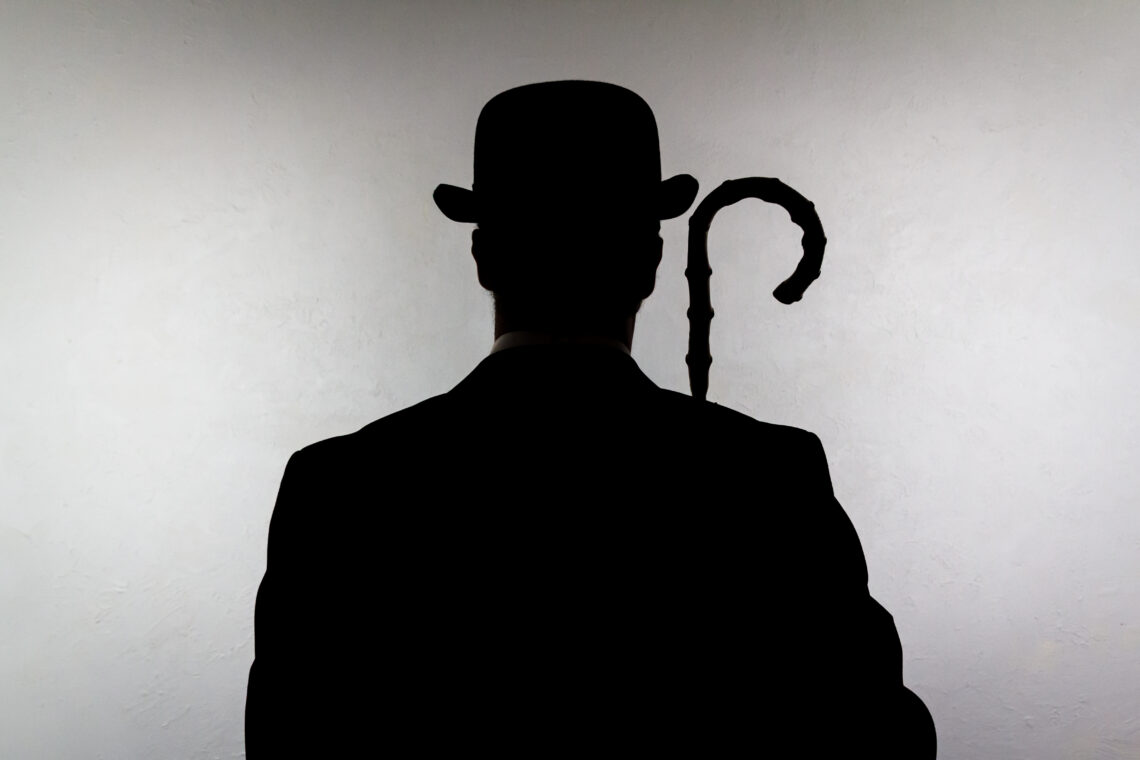By the time the holiday season rolled around in 1934, a ten-year-old little girl named Grace Budd had remained missing for six years. And tragically, for the Budd family, there were virtually no clues or breaks in the case of her disappearance.
Well, that was until Grace’s mother, Delia Flanagan, received a strange anonymously-penned letter.
“Dear Mrs. Budd. On Sunday, June 3, 1928, I called on you at 406 W. 15 Street. Brought you pot cheese– strawberries. We had lunch. Grace sat in my lap and kissed me. I made up my mind to eat her,” the letter read.
Delia received this sickening letter one chilly November night that started off by recalling the story of a boat worker who had acquired a taste for humans. Then, the anonymous correspondence ended by grossly detailing the murder of her daughter. According to the author, little Grace Budd had been roasted in an oven.
Now, the letter understandably sent Delia and the rest of the Budd family into utter shock. Being that it was unsigned, the note also spurred countless gruesome questions. For one cannibalistic serial killer named Albert Fish, though, this was the start of his downfall.
“The Gray Man” Albert Fish
Albert Fish was born in Washington, D.C., on May 19, 1870, as Hamilton Howard “Albert” Fish. Although, the cannibal went by a series of names. One included the “Gray Man,” while others regarded him as the “Brooklyn Vampire” or the “Werewolf of Wysteria.”
Albert was a tiny, introverted, and all-around unassuming man who defied the stereotypical images of “cannibal” and “killer.” He had a face that easily blended into the crowd, yet what he participated in behind closed doors could not have been more sinister.
During his childhood, Albert suffered from mental illness– a trend that actually ran in his family. His uncle received a diagnosis of mania; meanwhile, his brother was put into an asylum. Albert’s mother also claimed to routinely suffer from visual hallucinations.

One of the greatest challenges that he had to face, though, was the loss of his parents. When Albert was born, his father had already been seventy-five-years-old. So, by the time Albert turned five, his father passed away– leaving his widowed mother to try and figure out how to raise four children with little resources.
This ultimately became too overwhelming for Albert’s mother, so he and his three siblings were eventually put into the care of a state orphanage.
Immediately after entering that orphanage, though– which was known to regularly beat children and encourage bullying– Albert did not shy away from the pain. Instead, he reveled in it.
“I was there ’til I was nearly nine, and that’s where I got started wrong. We were unmercifully whipped. I saw boys doing many things they should not have done,” Albert recalled of his early childhood.
It did not take long for him to start to numb the pain. Then, Albert even started to associate it with pleasure.
Eventually, Albert’s mother did enter a more mentally and financially-stable state and was able to move him and his siblings home. By that point, though, the seed of torture had seemingly already been planted in Albert’s mind.
While back in his childhood home, he continued to beat himself as though he were still at the orphanage. At that same time, Albert also launched a relationship in 1882 with a telegraph boy. During that relationship, he was introduced to the consumption of human waste, along with other practices meant to spur certain, um, feelings.
These practices led Albert to continuously mutilate himself– regularly embedding needles into different parts of his body and hitting himself with nail-lined paddles.
By the time he was twenty-years-old and moved to New York City in 1890, though, Albert had stopped focusing on himself and instead began targeting children.
“The Brooklyn Vampire”
When Albert was a young adult, freshly moved to the Big Apple, he piqued an interest in the pain of others and wanted to learn more. So, immediately after settling into the city, he began luring young boys from their homes to assault and torture them. The same nail-lined paddle Albert previously used on himself also began his favorite weapon to harm others.
Bizarrely, though, in 1898, Albert actually got married to a woman whom he had been set up with by his mother. Then, the couple even went on to have six children together.
Albert reportedly never abused his wife or his own children. However, his newfound fatherhood did not stop him from tormenting other kids in the neighborhood.
By 1910, Albert had also begun working as a house painter and met a man known as Thomas Kedden. Then, he launched into an affair with Thomas. But, their relationship was built on pleasure from pain and humiliation, and it remains unclear just how much Thomas actually consented to.
In fact, just ten days after meeting Thomas, Albert actually lured him into an abandoned farmhouse and claimed they were going there on assignment. Then, once Thomas actually arrived inside, he realized he was locked in.
Thomas remained inside that farmhouse for two weeks, over which time Albert tortured him. Thomas’ body was mutilated, and his private parts were even half cut off.
Just as briskly as Albert arrived, though, he also disappeared right afterward. But, he did not forget to leave Thomas with a ten-dollar bill before heading out and never looking back.
“I shall never forget his scream or the look he gave me,” Albert said of Thomas.
Seven years later, in 1917, Albert began to struggle to conceal his mental illness. This pushed his wife to leave him for another man, and while alone, his self-mutilation only became more severe.
At that point, Albert also began teaching his own kids strange and inappropriate “games.” This then manifested in an obsession with cannibalism. Albert began by eating raw meat and even invited his children to dine with him.
Later, by 1919, Albert had developed a full-fledged compulsion to torture and engage in cannibalism. So, he actually started to seek out children who he deemed vulnerable. These kids were often disabled orphans or homeless children of color.
And one of his main methods of locating children was by scanning through local papers. There, families would place advertisements– looking for houseworkers or babysitters. It was within those classifieds that Albert stumbled upon ten-year-old Grace Budd.
Grace Budd
At first, Albert actually never intended to target Grace. Instead, he was interested in Grace’s older brother, Edward, who had been searching for work in the country.
Albert’s original plan was to “hire” Edward as a farmhand. Then, he would bring the boy out to the country and torture him.
So, Albert ended up going to the Budd household in Manhattan, introducing himself using the alias Frank Howard. And while there, Albert claimed to have an upstate farm that needed work and offered Edward the job.
While Edward was thinking over the offer, though, Albert noticed a young girl standing beside Edward’s parents, and his focus completely shifted. At that moment, he wanted Grace Budd instead and came up with a brand new plan on the spot.
Out of nowhere, Albert began rambling on about how he had been in the area to attend his niece’s birthday party. Then, he took a gamble and offered to bring Grace along, too.
Albert, again, appeared wholly unassuming, and his looks allowed him to convince Grace’s parents to let the ten-year-old travel with him. After that encounter, though, the Budd family never saw Grace again.
Albert ultimately took the little girl to his property upstate. Then, while Grace picked some wildflowers out in the yard, he hid unclothed in the upstairs bedroom– supposedly so he would not get any blood on his outfit.
Afterward, Albert called the little girl inside. She screamed immediately at the sight of Albert, but he grabbed her before she could run away. Then, according to Albert’s letter, he choked Grace to death while she helplessly fought for her life.
Albert did not stop there, though. Following the murder of the little girl, he proceeded to cut up her remains, cook them, and eat them. Albert claimed that it took him nine days to consume everything.
Albert’s Downfall
It is unclear why exactly Albert decided to pen such a gruesome and incriminating letter to the Budd family. And even though it was anonymous, the correspondence soon led to his capture.
Albert reportedly wrote the letter on a piece of stationary from the New York Private Chauffeur’s Benevolent Association. And after the police reached out to the company, they discovered that a janitor had left behind the piece of paper at a rooming house.
It was at that very same rooming house that investigators realized Albert Fish had also been renting a place. So, after discovering that Albert resembled the appearance of “Frank Howard”– the man who had visited the Budd family– investigators set up an interview.
To the authorities’ utter shock, though, Albert actually confessed on the spot. He revealed specific details about what he had done to Grace, as well as dozens of other kids.
Still, in the end, the police could only prove that Grace and two other children had definitely fallen victim to Albert. The other children included a four-year-old boy Billy Gaffney and another young boy named, Francis McDonnell.
Albert Fish’s Execution
The cannibalistic serial killer first went on trial on March 11, 1935, and his defense team pleaded innocent by reason of insanity. While on the stand, Albert also claimed that auditory hallucinations had told him to murder the children.
Numerous psychiatrists then evaluated Albert and also supported his plea of insanity. Despite that, though, the jury still believed that he was sane enough to be held responsible for his crimes.
So, Albert’s trial took just ten days, and he ended up being found guilty. Moreover, he was sentenced to execution via electrocution the following year.
While spending months behind bars in Sing Sing prison, the killer was allowed to pen a series of notes about his heinous crimes. These details were originally meant to help journalists accurately cover the case.
While most investigators believed that Albert had taken the lives of between three and nine victims, though, he claimed to have “had a child in every state.” Although, this horrifying claim remains unconfirmed.
Then, just before Albert was finally executed on January 16, 1936, the killer’s attorney, Jack Dempsey, reportedly took one look at the prison-written notes and refused to ever share them with the press or the public.
“I will never show it to anyone. It was the most filthy string of obscenities that I have ever read,” Dempsy said.






